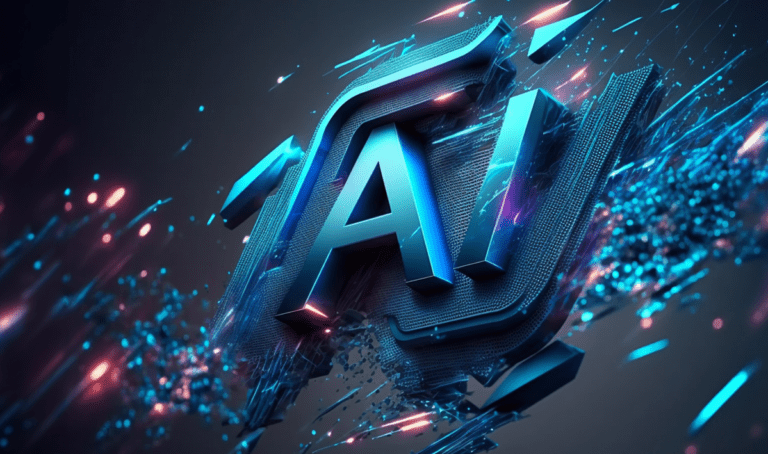However, the path to integrating AI can be fraught with challenges. This post, inspired by insights from Fergal McGovern, CEO of VisibleThread, aims to help you navigate the complex terrain of AI technology adoption.
The Rise of Gen AI:
Gen AI has captured interest across the business population: individuals across regions, industries, and seniority levels are using Gen AI for work and outside of work. McKinsey in August notes, 79% of orgnaizations say they’ve had at least some exposure to Gen AI, either for work or outside of work. 22% say they are regularly using it in their own work. While reported use is quite similar across seniority levels, it is highest among respondents working in the technology sector and those in North America.
The global artificial intelligence market size is projected to expand at a compound annual growth rate (CAGR) of 37.3% from 2023 to 2030. It is projected to reach $1,811.8 billion by 2030 – Grand View Research
The Importance of Security in AI Adoption:
AI systems often handle sensitive data, making security a top priority. Ensure that the AI solution you choose complies with industry regulations and doesn’t compromise your data security. Ask vendors about their security measures and data handling policies.
Many organizations not yet addressing potential risks from Gen AI:
McKinsey, August 2023 reveals a notable gap in organizational readiness for gen AI, particularly in managing the risks of inaccuracy and cybersecurity.
Preparation for Gen AI Use and Associated Risks:
- Only 21% of respondents from AI-adopting organizations have policies for gen AI technology use by employees.
Addressing Risks of Gen AI Adoption:
- Inaccuracy is the most commonly cited risk with gen AI, more so than cybersecurity and regulatory compliance.
- Only 32% of respondents are taking steps to mitigate inaccuracy in AI.
Comparison with Cybersecurity Measures:
- 38% of respondents are mitigating cybersecurity risks related to AI.
- This is a decrease from the previous year, where 51% reported addressing AI-related cybersecurity risks.
General Trend in Addressing AI Risks:
- A majority of respondents indicate their organizations are not effectively tackling AI-related risks.
Understanding AI and Its Role in Your Business:
Before diving into AI, it’s crucial to understand what AI can and cannot do. AI excels in tasks that involve creativity and data analysis, like summarizing texts or drafting proposals. However, it’s less effective in deterministic tasks, such as database management. Assess your business needs and determine where AI can add the most value.
The Importance of Security in AI Adoption:
AI systems often handle sensitive data, making security a top priority. Ensure that the AI solution you choose complies with industry regulations and doesn’t compromise your data security. Ask vendors about their security measures and data handling policies.
Many organizations not yet addressing potential risks from Gen AI:
A McKinsey report, August 2023 reveals a notable gap in organizational readiness for gen AI, particularly in managing the risks of inaccuracy and cybersecurity.
Preparation for Gen AI Use and Associated Risks:
- Only 21% of respondents from AI-adopting organizations have policies for gen AI technology use by employees.
Addressing Risks of Gen AI Adoption:
- Inaccuracy is the most commonly cited risk with gen AI, more so than cybersecurity and regulatory compliance.
- Only 32% of respondents are taking steps to mitigate inaccuracy in AI.
Comparison with Cybersecurity Measures:
- 38% of respondents are mitigating cybersecurity risks related to AI.
- This is a decrease from the previous year, where 51% reported addressing AI-related cybersecurity risks.
General Trend in Addressing AI Risks:
- A majority of respondents indicate their organizations are not effectively tackling AI-related risks.
Choosing the Right AI Solution:
Not all AI solutions are created equal. Look for solutions that align with your specific business needs. Be wary of vendors promising miraculous results without substantiating their claims. It’s essential to choose AI tools that are proven to be effective in tasks relevant to your business.
The Human Element: Internal Champions and Training:
Successful AI adoption requires more than just technology; it requires people. Identify internal champions who understand both the technology and its potential impact on your business. Invest in training and education to ensure your team can effectively use and benefit from AI.
The biggest challenge in adopting automation is a human challenge. It's fundamentally that people overestimate the ability for normal employees typically in organizations to absorb behavior change.
Fergal McGovern, CEO and Founder of VisibleThread
Incremental Implementation and Feedback:
Implement AI solutions in stages. Start with a small, manageable scope and gradually expand as you gain confidence and experience. Establish a feedback loop to monitor progress and make necessary adjustments.
Avoiding AI Hallucinations:
AI is powerful but not infallible. Be aware of the potential for AI to produce unexpected or inaccurate results. Always verify AI-generated outputs and understand the limitations of your AI system.
AI hallucination is a phenomenon wherein a large language model (LLM) - often a generative AI chatbot or computer vision tool - perceives patterns or objects that are nonexistent or imperceptible to human observers, creating outputs that are nonsensical or altogether inaccurate.
IBM.com
Special Considerations for Small Businesses:
For small businesses, AI adoption must be a strategic decision involving top leadership. Limited resources mean that every investment in AI must be carefully considered for its potential return on investment.
In a smaller organization, because you run faster because you're juggling many more balls at the same time as long as the C-Suite is involved and leadership is involved, then you can get good outcomes.
Fergal McGovern, CEO and Founder of VisibleThread
Checklist for organizations considering purchasing an AI solution:
- Define Your Business Needs:
– Identify specific areas where AI can add value to your business.
– Understand the tasks for which AI is suitable and those for which it is not. - Evaluate AI’s Role and Limitations:
– Assess if the AI solution aligns with your business objectives.
– Understand the limitations of AI, particularly in tasks requiring high accuracy or deterministic outcomes. - Security and Compliance:
– Ensure the AI solution adheres to industry-specific regulations and standards.
– Verify the vendor’s data security measures and policies. - Vendor Evaluation:
– Research the vendor’s track record and reputation in the AI field.
– Seek out case studies or testimonials from other clients, especially those in your industry. - Mitigating Risks of Inaccuracy:
– Understand how the AI solution handles inaccuracies and its approach to error correction.
– Plan for regular checks and balances to verify the AI-generated outputs. - Internal Champion Identification:
– Identify or appoint an internal champion who understands both the technology and its potential impact.
– Ensure this person or team has the authority and resources to lead the AI integration. - Training and Education:
– Plan for comprehensive training for employees who will use the AI solution.
– Consider ongoing education to keep up with AI advancements and changes. - Incremental Implementation Strategy:
– Start with a small-scale implementation to gauge the AI solution’s effectiveness.
– Gradually expand the use of AI as confidence and familiarity grow. - Feedback and Continuous Improvement:
– Establish a feedback loop to gather insights on the AI solution’s performance.
– Use feedback for continuous improvement and adjustment of strategies. - Future Scalability and Support:
– Assess the AI solution’s scalability to grow with your business needs.
– Check the level of customer support and technical assistance provided by the vendor.
Conclusion:
AI technology offers immense potential to transform businesses, making operations more efficient and opening up new opportunities. However, successful adoption requires a strategic approach, careful planning, and an understanding of the technology’s capabilities and limitations. This post is inspired by a recent podcast episode, click below to watch the full conversation.






